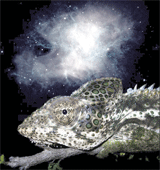
A Common Heritage
The Right to Starlight
|
|
| News |
| The World Night |
| Refereces - Actions |
| Conference 2007 |
| Publications |
| Objectives |
| Starlight Declaration |
| Calendar |

STARLIGHT RESERVES |
A Starlight Reserve is a site where a commitment to defend the night sky quality and the access to starlight has been established. Its main function will be to preserve the quality of the night sky and its associated values, being them cultural, scientific, astronomical, natural, or landscape-related. |
"An unpolluted night sky that allows the enjoyment and contemplation of the firmament should be considered an inalienable right of humankind equivalent to all other environmental, social, and cultural rights, due to its impact on the development of all peoples and on the conservation of biodiversity."
Starlight Declaration. La Palma, Spain 2008.
"The sky, our common and universal heritage, is an integral part of the environment perceived by humanity. Humankind has always observed the sky either to interpret it or to understand the physical laws that govern the universe. This interest in astronomy has had profound implications for science, philosophy, religion, culture and our general conception of the universe".
Proclamation of 2009 as International Year of Astronomy. UNESCO. Paris 2005.
“Persons belonging to future generations have the right to an uncontaminated and undamaged Earth, including pure skies; they are entitled to its enjoyment as the ground of human history of culture and social bonds that make each generation and individual a member of one human family.”
Universal Declaration of Human Rights for Future Generations. La Laguna, 1994. f
|
STARLIGHT RESERVE CONCEPT |
|||
 |
NZ Starlight Reserve |
|||
 |
OTPC Sky Quality Protection Technical Office The Sky Quality Protection Technical Office (OTPC) was set up by the IAC in January 1992 to provide advice on the application of the Sky Law (Law 31/1988), which protects the astronomical quality of observatories in the Canaries from: light pollution, radioelectrical pollution, atmospheric pollution, aviation routes. The OTPC provides advice on the application of regulations contained in the Law and produces technical reports for lighting projects and radioelectric stations, as well as issuing lighting certificates. |
|||
 |
Dark Sky Guidelines |
|||
AstroLaB |
||||
 |
CIE |
|||
 |
IDA The International Dark Sky Places Through our International Dark Sky Places program, IDA and its partners certify locations with exceptional nightscapes as International Dark Sky Communities (IDSC), International Dark Sky Parks (IDSP), and International Dark Sky Reserves (IDSR). |
|||
 |
Starlight A Common Heritage International Conference in Defence of the Quality of the Night Sky and the Right to Observe the Stars. Publication |
|||

